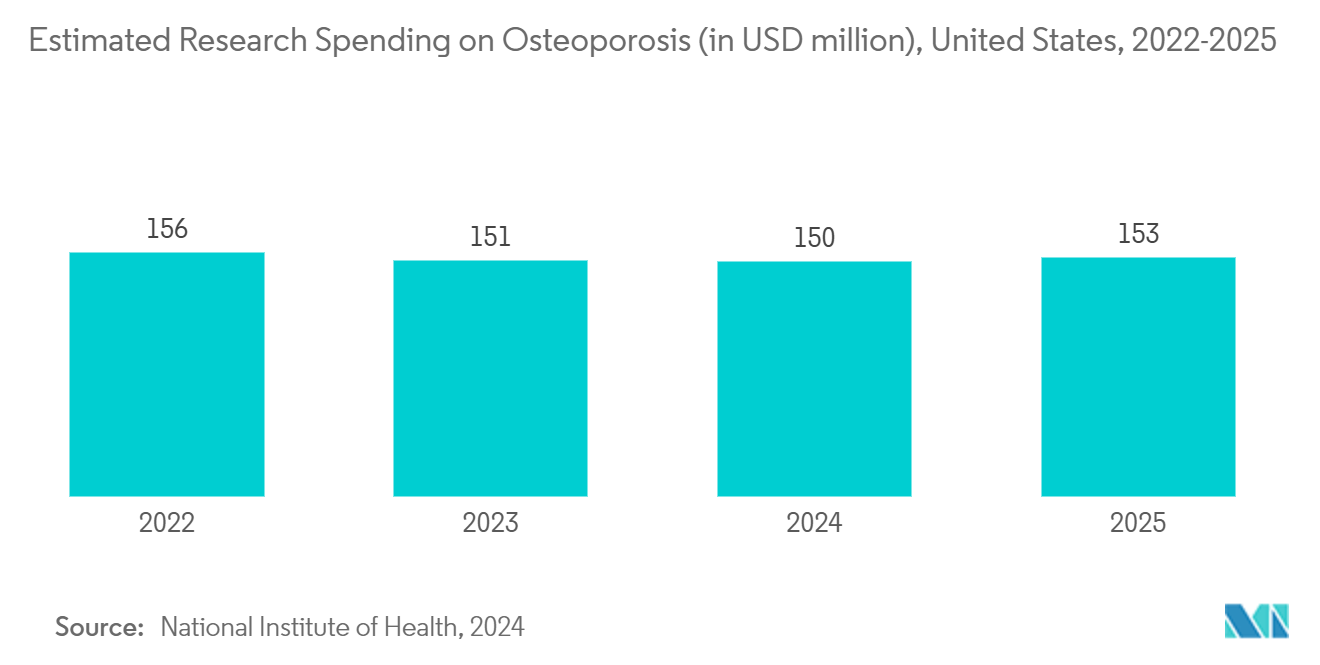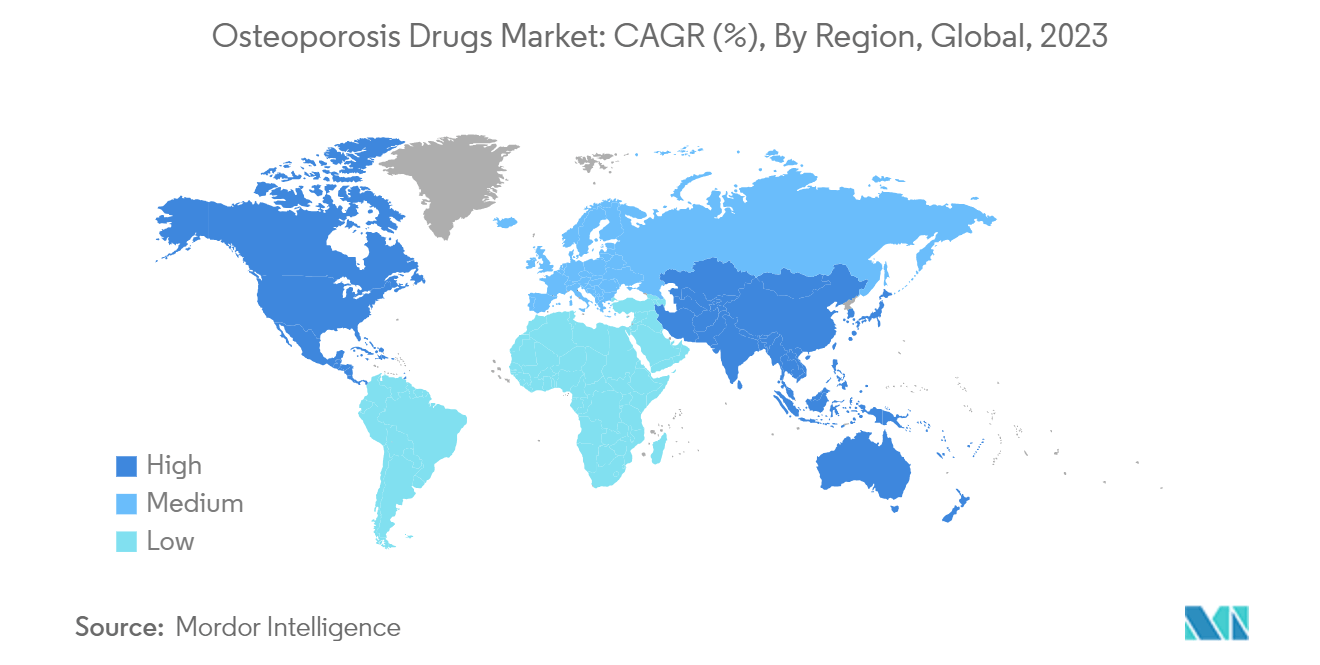Market Trends of Osteoporosis Drugs Industry
The RANKL Inhibitors Segment is Expected to Witness Significant Growth Over the Forecast Period
Receptor activators of nuclear factor kappa-Β ligand (RANKL) inhibitors are used to treat osteoporosis in patients at high risk of fracture. RANKL can also be combined with other drugs to convey a synergistic effect on the entire treatment system. The segment is expected to grow during the forecast period, driven by rising approvals of innovative RANKL inhibitors, which significantly contribute to its expansion.
The rising approvals of innovative RANKL inhibitors and their biosimilars contribute significantly to the segment's growth during the forecast period. For instance, in February 2023, the Food and Drug Administration (FDA) accepted Sandoz's Biologics License Application (BLA) for a proposed biosimilar to denosumab. Denosumab is an approved RANKL inhibitor for the treatment of postmenopausal women with osteoporosis.
Similarly, in May 2023, the European Medicines Agency accepted Sandoz’s marketing authorization applications for a biosimilar to denosumab to treat conditions such as osteoporosis and cancer-related bone complications. The applications cover a broad range of indications, including osteoporosis in postmenopausal women and men at higher risk of fractures. This regulatory progress is expected to drive growth in the RANKL inhibitors segment as biosimilar options increase accessibility to osteoporosis treatments.
Additionally, in April 2024, researchers at the University of Arkansas for Medical Sciences were awarded a USD 2.27 million NIH grant to investigate estrogen's role in preventing bone loss and osteoporosis by focusing on its impact on osteoclast activity. Their study aims to explore how estrogen inhibits RANKL-induced mitochondrial functions in osteoclasts, potentially offering new insights into osteoporosis treatment. This research could drive growth in the RANKL inhibitors market by uncovering mechanisms that reduce bone resorption and supporting the development of targeted therapies for osteoporosis.
In conclusion, the growth of the RANKL inhibitors segment is driven by rising regulatory approvals, advancements in biosimilar development, and research initiatives exploring innovative mechanisms to enhance osteoporosis treatment, improving accessibility and therapeutic efficacy.

North America is Expected to Hold a Significant Share in the Market Over the Forecast Period
North America is anticipated to hold a substantial share of the osteoporosis drugs market due to the rising incidence of osteoporosis, substantial investment in research and development, continuous product introductions and approvals, and the strong presence of market players in the region.
The high prevalence of osteoporosis is expected to boost the market's growth. For instance, according to a report published by the Government of Canada in July 2024, approximately 10% of the Canada population aged 40 and over are affected by osteoporosis, with women being four times more likely to report the condition than men. This higher risk for women is attributed to their lower initial bone density and faster bone mass loss with age.
Additionally, market players' launches and approvals of innovative drugs are expected to propel market growth during the forecast period. For instance, in November 2023, Apotex Corp. launched its teriparatide injection, a pre-filled pen designed for single-patient use to treat osteoporosis in the United States. The pen delivers 250 mcg/mL of Teriparatide, providing 28 daily doses of 20 mcg per pen.
Similarly, in December 2022, the FDA approved TYMLOS (abaloparatide), a parathyroid hormone-related peptide analog, to increase bone mineral density among men with osteoporosis at high risk for fracture. Radius Health, Inc. in the United States manufactures and markets the drug. Such growth strategies are expected to propel the growth of the regional market during the forecast period.
In conclusion, the high prevalence of osteoporosis, increasing product approvals and launches, and a strong concentration of market players in North America are expected to drive the growth of the osteoporosis drugs market significantly.


